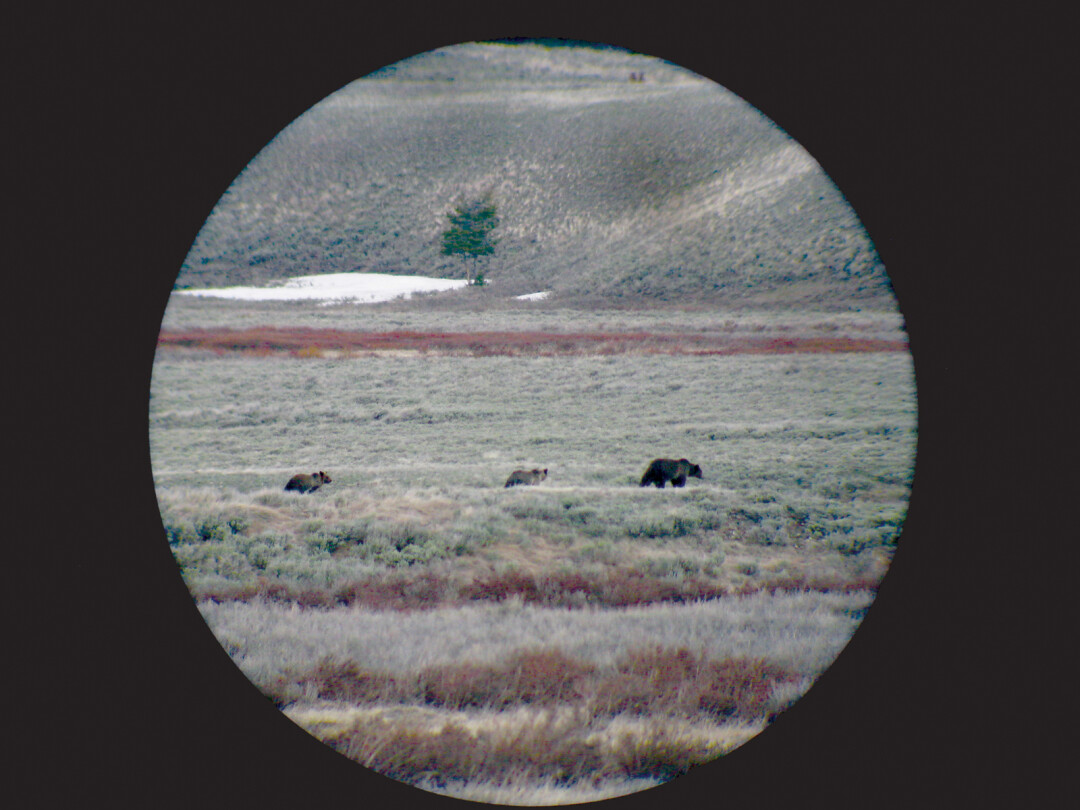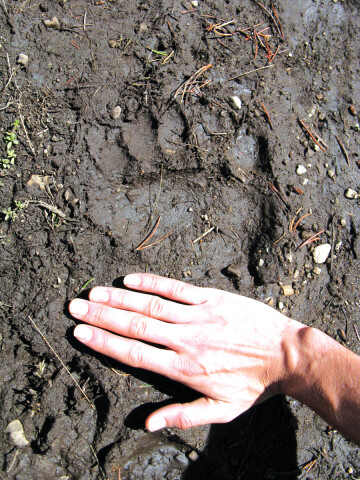Sharing the Woods with Bears
Summer is upon us, and for lots of residents and visitors to the Greater Yellowstone Area that means hiking, trail running, camping, mountain biking, fishing, horseback riding, and many other great outdoor activities. Enjoying these activities can also put us right in a bear’s living room, so to speak.
Do you know what to do if you see a bear? The answer is not the same for every encounter. Knowing what to do while traveling in bear country can make your experience safer and much more relaxing.
While it is nice to know how to tell whether you are looking at a black bear or a grizzly, this information alone will not prepare you for an encounter. The most important kind of identification during an encounter is behavioral.
What you do in an encounter matters just as much as what the bear does. Bears are “reading” your behavior just as you are reading theirs.
Your Best Bets For Preventing Any Wildlife Encounters Are:
Travel in Groups - Two is better than one, but four or more is ideal. Bears find large groups of people to be quite formidable. Keep your group close enough that you can respond together if you do see a bear.
Make Noise And Be Alert - Our human voice is the best noise you can make. Artificial noises like bells do not reliably send bears the message that a human is coming. Ideally, make noise periodically and especially in areas bears are more likely to be, and/or might have difficulty hearing you. For example: Transition zones between forests and meadows, noisy creeks, or if there is a loud wind.
Avoid Travelling at Night, Dawn, and Dusk - Bears are most active during these times.
Avoid Carcasses - Be very alert for bears if you smell an animal carcass, and look for concentrations of scavengers (like ravens and magpies) that may clue you in to the location of a carcass.
Carry bear spray and know how to use it - If you follow these suggestions, you are much less likely to encounter a bear. Remember, bears would rather not encounter you. If you do see a bear, stop, observe, and think. There are several different kinds of bear encounters:
If you see a bear at a distance, but the bear doesn’t see you move away without being detected, doing so quietly when the bear is not looking toward you.
If you see a bear and you know the bear sees you, stand your ground and watch the bear. If the bear disengages from you, you may move away slowly.If the bear remains focused on you, you must decide if it is A) startled and agitated by you or is B) calm and curious.
If the bear is stressed, surprised, agitated, unhappy, or is ready to charge: stand your ground. The bear may display signs of stress like “woofing,” slapping the ground, and pacing. Its ears may be laid back. If the bear charges, use your bear spray. Do not begin to back up until the bear disengages from you, or has been sprayed by bear spray and is retreating. Never run. If, and only if, the bear physically contacts you, go face down on the ground and cover your neck. Leave your backpack on.
If the bear appears calm and curious (i.e., potentially predatory) and slowly or methodically approaches you: stand your ground. Get aggressive, wave your arms, and shout. Get your bear spray ready and spray the bear if it charges, stalks or follows you. If the bear contacts you, fight back. Do not back up, do not lay on the ground. Never run.

Assume bears could be in your favorite outdoor areas. When camping, store food or other “smellies” (such as toothbrushes and toothpaste, chapstick, empty food containers, dog food, garbage) inside your vehicle, in a “bear box,” or in an Interagency Grizzly Bear Committee certified bear-resistant container. See http://igbconline.org/certified-products-list/ for a full list.
So you are curious and want to know, “Is it a black bear or a grizzly?” Black bears and grizzlies are best identified by their silhouette. A grizzly bear almost always has a distinctive shoulder hump, proportionally smaller ears, wider head, and a dish-shaped (concave) forehead. Black bears tend to have a more prominent rump, and little to no shoulder hump, especially when viewed with their head up as they are looking forward. Black bears also have a straighter forehead and nose profile, as well as large ears. Color is not a reliable way to tell these species apart. In our area there are many “cinnamon” colored black bears that lots of people confuse with grizzlies. When looking at a track left by a bear’s front foot, you will notice a space between the toes and the pad. In black bears, this space is arched, and in grizzlies it is very straight.
Both species of bears can pose a safety risk, and it is wise to carry bear spray. Bear spray is an extremely potent, concentrated hot pepper oil which is forced from a pressurized can by a propellant. It works by overloading the bear’s senses by clouding its eyes, nose, skin, and mouth. This product is not to be confused with mace. Be sure to purchase EPA-registered bear spray.
Always carry your bear spray somewhere very accessible, like your belt. If bears can charge at more than 40 feet per second, will you have time to grab your bear spray? Practice pulling your spray out of its holster and aiming it at a point on the ground about 15’ in front of you. In a real encounter, you should hold down the trigger for a 2 second burst. The more you practice, the better prepared you will be if you encounter a bear.
You can practice using an inert can of bear spray, available from several companies, but save your real bear spray for a real encounter. Bear spray is a worthwhile investment in your safety when traveling in bear country.
Next time you venture into the woods, carry bear spray and have peace of mind knowing that how you have the power to prevent most bear encounters. If you do meet a bear on the trail, remember that your reaction matters. By better understanding bears and preparing yourself, you can relax, feel safe, and enjoy all our area has to offer.
For more information, please visit http://igbconline.org/
Danielle Oyler is the Southwest Montana Bear Safety Education Coordinator. She can be reached at Danielle.c.oyler@gmail.com